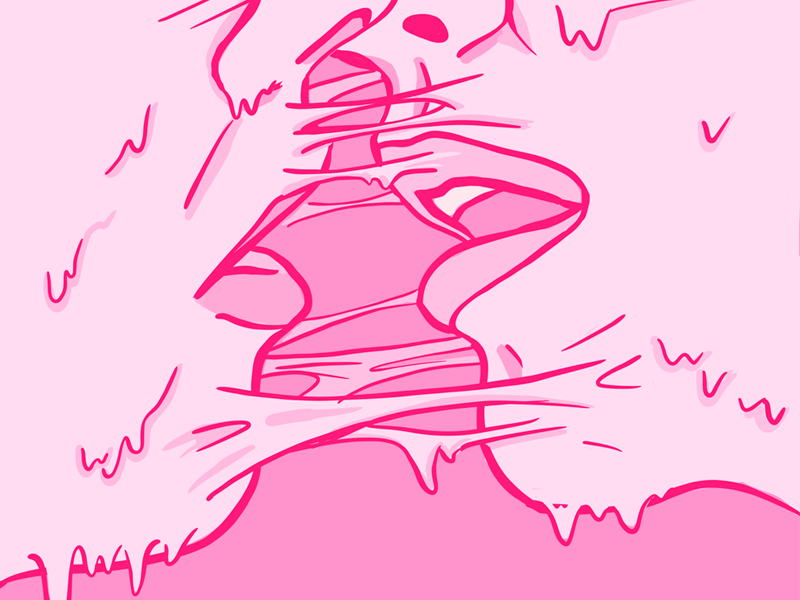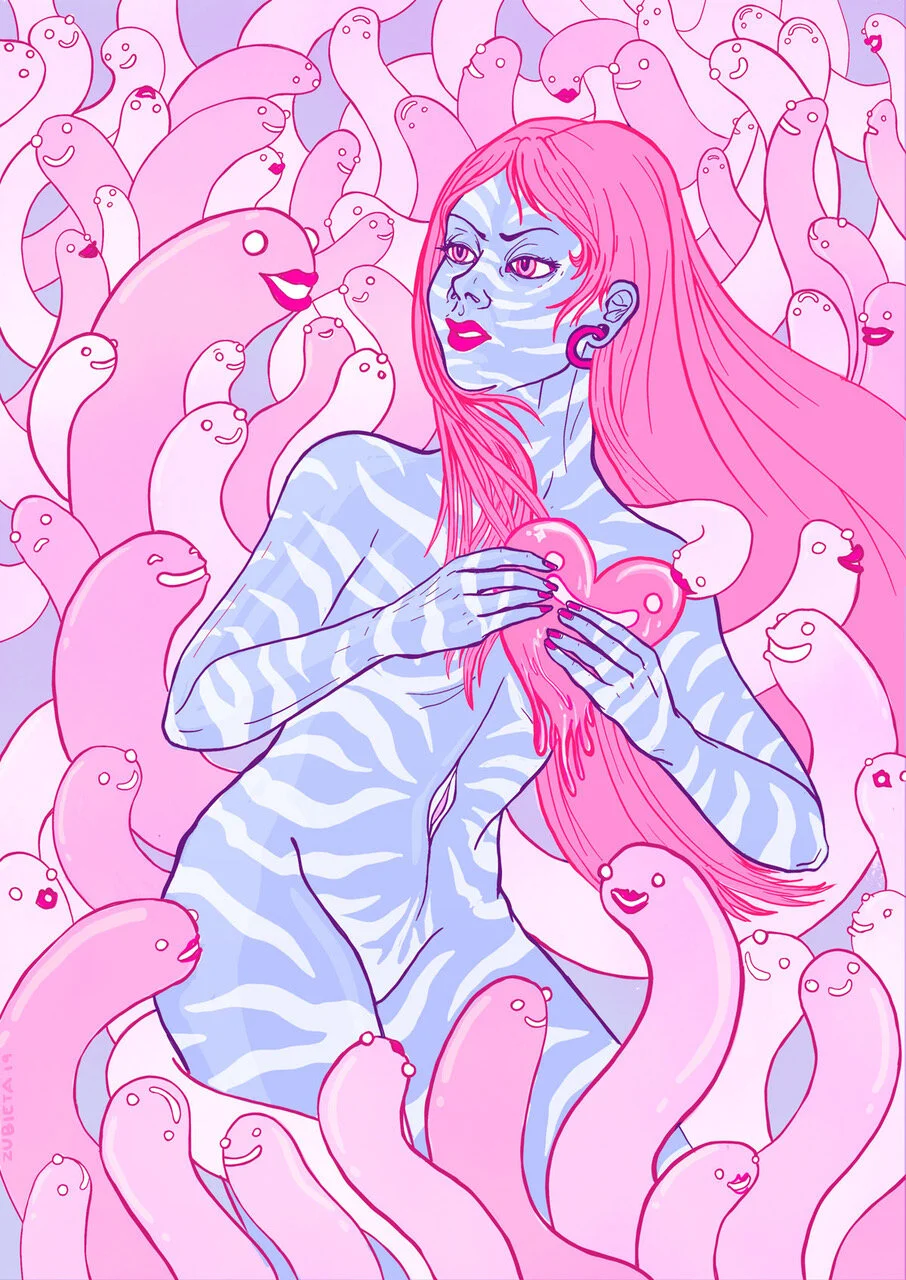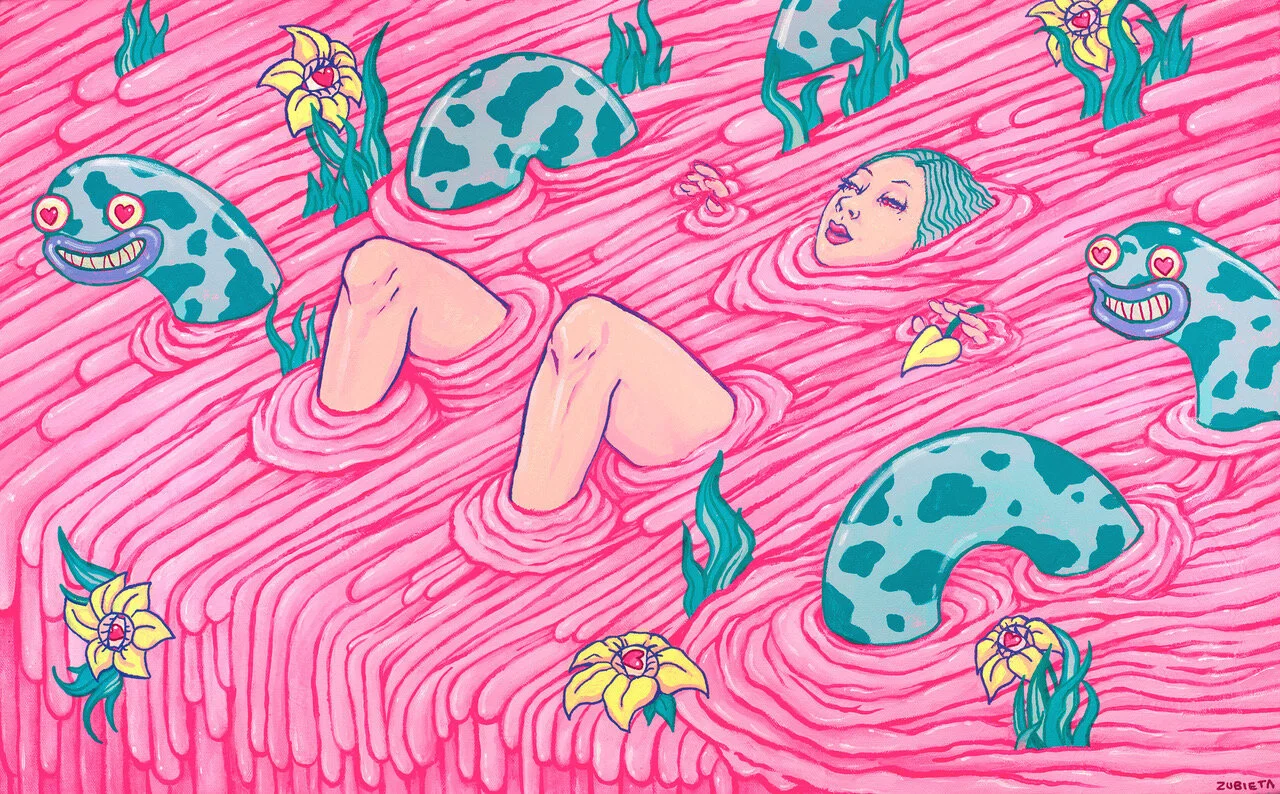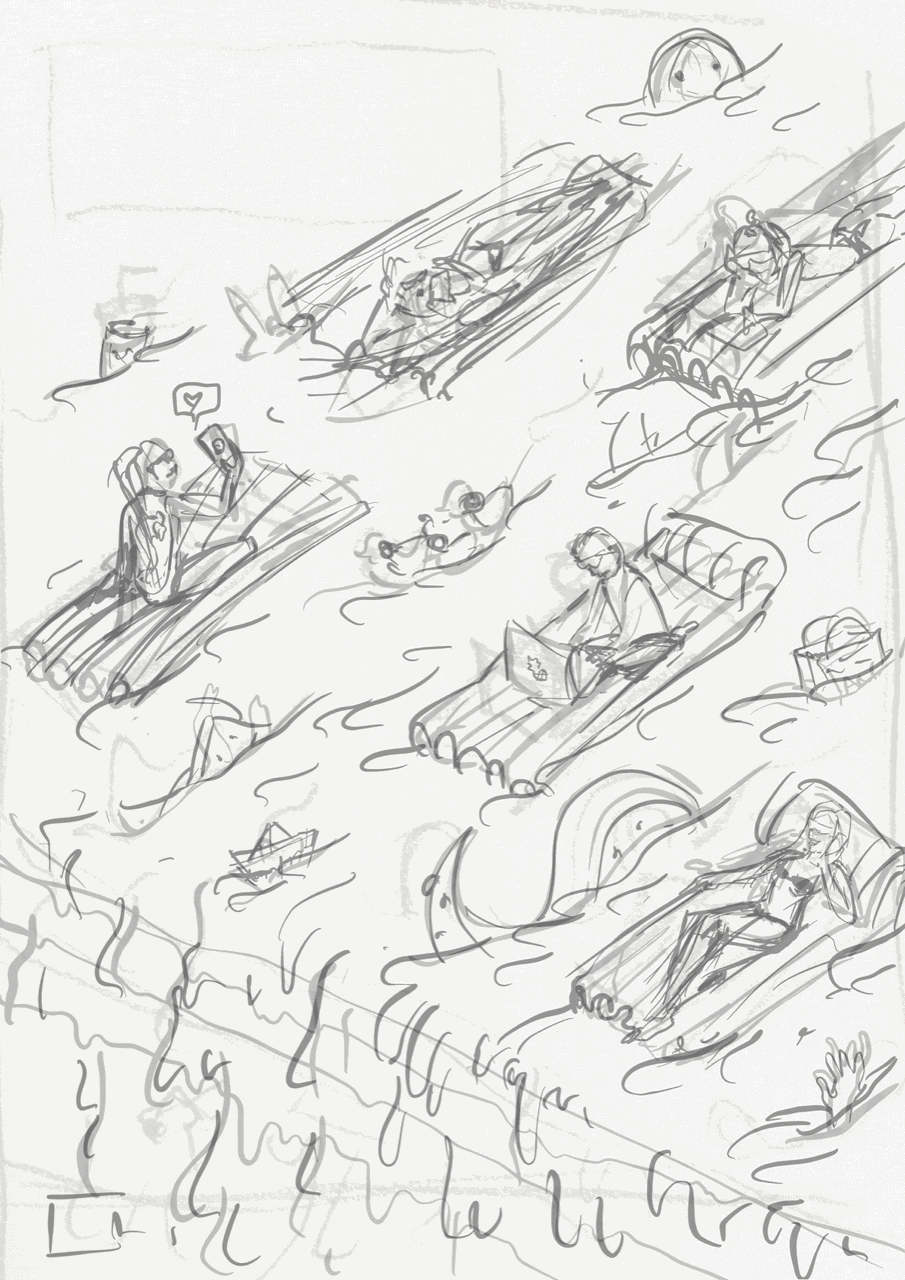Talking To: Marta Zubieta
Marta Zubieta is a Spanish artist, illustrator and muralist living in Bristol.
‘Love can be a sticky thing.’
Specialising in illustration and murals, she inspires herself using an eclectic mix of sources including 90’s cartoons, sci-fi, pop surrealist art and latin folklore to create her adult illustrations for ‘forever teenagers.’
Bringing vibrant colour to often bleak subjects, Zubieta explores the millennial culture and its issues through pink tinted glasses, neon colours and dreamy characters.
The story?
Marta moved to Bristol in 2015, attracted by its vibrant music and art scene. She quickly started creating posters for music collectives like Worm Disco Club, as well as creating logos for bands like Panther Panther or Prudent Primate. She also performs Electro Latin music with Camo Clave and Xaman X and is currently finishing her Masters degree in Graphic Arts at UWE Bristol.
‘Melting Heart - She gave it and took it back so many times that it started to melt, and the worms could smell it.’
The process?
When it comes to the process, Marta often finds inspiration in her own life experiences and emotions.
“Everything can start as a thought, a worry, a desire, or just as an image that doesn’t make sense at first, but after finishing it and looking at it I can always find its relation to something that is happening in my life”.
“I personally struggle a lot with anxiety, as do a lot of other millennials, and paintings becomes a form of catharsis for my own problems. It has become the best way to express my fears and stare into their eyes.'“
“I like to use bright and happy colours to express dark ideas because they are more pleasant to look at. At first you could think it is just a pretty image, then you look a bit more and you start to realise what’s behind it. Then you think: does the artwork really have this dark subtext or am I simply seeing what my mind wants to see? Thinking of this makes me think of the great storyteller, Alan Moore, who once said about art: “Artists use lies to tell the truth. Yes, I created a lie. But because you believed it, you found something true about yourself.”
Digital or traditional?
“Everything starts on a piece of paper and then I decide if the final piece will be digital or traditional. Digital work is more comfortable because everything can change at any point of the process whilst traditional artwork is more risky and meticulous. Because of this, I feel more free working on the screen though it can be sometimes tiring and artificial.”
“Working digitally also means that If my mood changes whilst I am developing the piece I can normally add details to the piece to incorporate those changes in my mood. In traditional artwork you can see all the scars of the changes done, but in digital art the print is totally invisible.”
“I have many pieces which are half completed - just because the way I thought about subjects changed or I lost interest in an emotion. I am trying to push myself to finish work, though there are many artists that argue some pieces should never be finished.”
What’s happening now?
“After a super productive year I feel like I have burnt out a bit and I am giving myself time to practice “being a human” or “mindfulness” or whatever you want to call it. I am giving myself space to explore new ideas and learning to be more present, though the creative anxiety is always there.”
“At the moment I am writing a graphic novel about online relationships and the anxiety this brings into modern day life. I am using it as an exercise to practise developing longer narratives, as well as pushing myself to work doing something that is not immediately shareable on social media. It is helping me to push through inner conversations and detach myself from the ‘likes’.”
‘Rebirth, 2019 - Mixed Media.’ I started this when I was feeling low and I was portraying that state of feeling - I was floating and drowning at the same time. All those feelings made me feel unable to finish it. I hated what I was seeing in the picture and for a while I just painted pink lines, over and over and over and over.
Some friends told me to burn it or rip it up, others told me to fight it, to find the way out of it. I am thankful for all those voices.
Fighting my monsters was the main objective and this painting has become my obsession for the last month. I decided to stop feeling guilty about not being super-productive. I realised the world wasn’t going to stop just because I take some time to reflect or some time to read and spend more time having longer conversations with friends.
Finishing this canvas became my exorcism.
It has become a healing process for me. It is important to acknowledge your monsters and allow yourself to be patient - to change routines and to face your fears.
And finally… Why are there so many worms?
“The worms represent my fears, my problems, my insecurities, through painting them I face them, and through facing them I liberate myself.”
‘Millennial Summers ‘
Life of freelancers in summer. Always available and hyperconnected in holiday time, flowing on a pink sea into the abyss.
‘No estamos locas, somos mujeres!
If we are sad, don’t label us as negative.
If we cry, don’t tell us we are pathetic.
If we get angry, don’t call us hysterical.
We are not crazy, we are women! Sensitive, courageous, emotional and powerful.’
‘Noodles Love’
Be yourself, be weird and swim with worms. I drew this piece when I was going through a hard time. I was feeling trapped by own thoughts; my fears and my anxieties. I was still coping though, just floating, letting myself go, swimming with my worms.









